We arrived in Narita City after a long day of traveling, train transfers (and re-transfers, once we realized we were at the wrong station….oh, and a very necessary stop at the Kit Kat boutique in Ikebukuro). Having spent the first portion of our trip in Tokyo, and come directly from Kyoto, with crowds of tourists quite literally everywhere, I was delighted find myself wandering streets far less congested.
And this was more or less my expectation for Narita-san Shinshoji Temple. Small. Quaint. Free of the pressing crowds that dominated most of our trip. Well, I was correct on that last count. The temple complex has been slowly growing since its establishment over 1,000 years ago, and now includes amongst its structures five buildings designated important cultural properties.
This not-so-little temple complex is stunning, and fortunately for us, hasn’t yet caught on as a major tourist attraction!
Situated on Narita mountain, the temple entrance is a 15 minute walk from the train station, up the picturesque Omote-Sando street. While not a taxing walk, you can also opt to take a city bus from the train station.
If you’re just in the area on a layover, it’s a cinch to take a train or hotel bus from Narita airport; both will stop at Narita Station, from there you can fill up on real food (omg, non-airplane food, I know you feel me on this), and make the short trek to the temple.
If you’re just in the area on a layover, it’s a cinch to take a train or hotel bus from Narita airport; both will stop at Narita Station, from there you can fill up on real food (omg, non-airplane food, I know you feel me on this), and make the short trek to the temple.
Hot dog? I have no explanation for this…
Narita Shinshoji Temple was established in 940, and dedicated to fire deity Fudo Myoo after fire rituals centered around a statue brought from Kyoto were credited with success in suppressing a samurai rebellion. The Fudo Myoo statue stayed in its new temple home in Narita, where it is now displayed on on special occasions (there does, however, seem to be some question as to whether the piece is as old as the temple claims).
Regionally well known today, Narita Shinshoji Temple wasn’t brought to the spotlight until the late 1600s and early 1700s, when it gained the patronage of popular kabuki actor Ichikawa Danjuro. Danjuro’s portrayal of Fudo Myoo was so powerful that spectators often reacted as though they were in the presence of the actual deity! The actor, who felt that Fudo Myoo had protected his wife and son during childbirth, did much to inspire Edo-ites to travel to Narita Temple, including writing and starring in a play revolving around the temple.
Regionally well known today, Narita Shinshoji Temple wasn’t brought to the spotlight until the late 1600s and early 1700s, when it gained the patronage of popular kabuki actor Ichikawa Danjuro. Danjuro’s portrayal of Fudo Myoo was so powerful that spectators often reacted as though they were in the presence of the actual deity! The actor, who felt that Fudo Myoo had protected his wife and son during childbirth, did much to inspire Edo-ites to travel to Narita Temple, including writing and starring in a play revolving around the temple.
Multiple flights of stairs past the entrance gate, you’re on the main temple level, with the smell of incense in the air and (if you’re lucky), the deep reverberations of taiko drums in the background. We arrived during the daily Goma Fire Ritual, in which the priests offer devotees’ prayers to temple deity Fudo Myoo by burning them in a consecrated fire.
Photographs are prohibited inside the main hall, so this photo is courtesy of the nice people at Narita City Tourism:
What you’re seeing in the photo comes after the burning of the prayers; believers will come forward with their purses and wallets, which priests wave over the consecrated fire to bless them.
Above, ema, wooden prayer cards that are purchased at the temple and hung after writing your wishes on the back. These depict Fudo Myoo with his characteristic sword (did you spot the swords earlier in the post?), rope and flames. They make fun souvenirs, too!
This daito is at the at the peak of the temple complex (the same pagoda in the photo at the top of this post). Its golden spire is often visible peeking out of the tree tops as you travel around Narita city.
From the daito, you descend down into a European style garden, which is the beginning of the large, sublimely tranquil Narita Park.
One last glance back up at the daito, which is even more dramatic from below…and then it’s time for a stroll around the park (and wishing you’d packed a picnic).
Statue decorated with waraji, woven sandals that are traditionally offered to temples and shrines for leg and foot health, as well as safe travel.
This post was sponsored by Narita City Tourism, but as always, all opinions are my own! Narita Shinshoji Temple was just one of the many things we did in the area (stay tuned for more posts!), though I think the temple alone is worth a stop in Narita City.
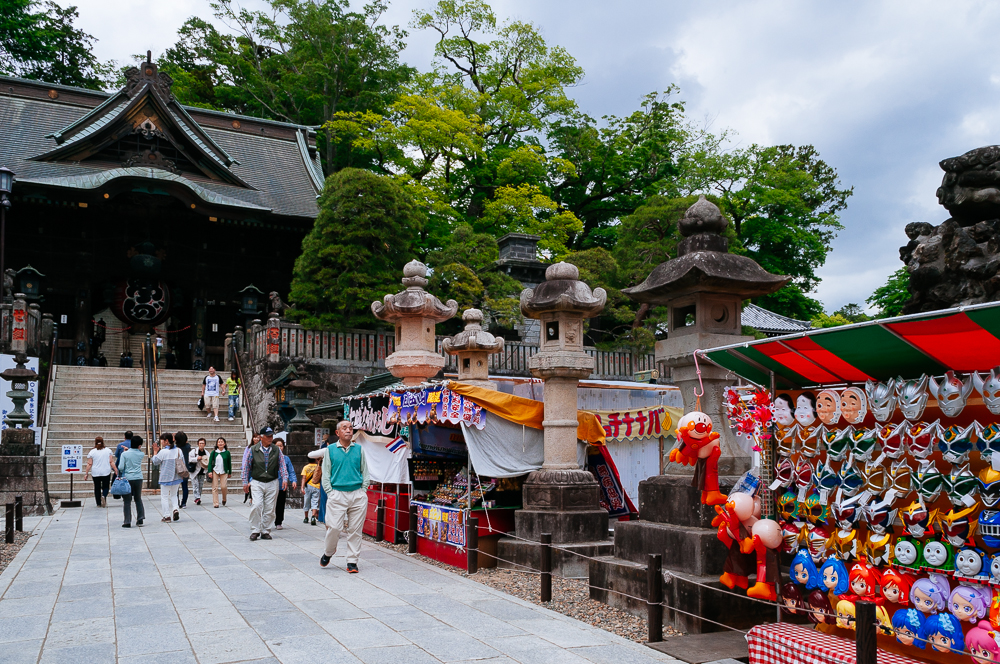

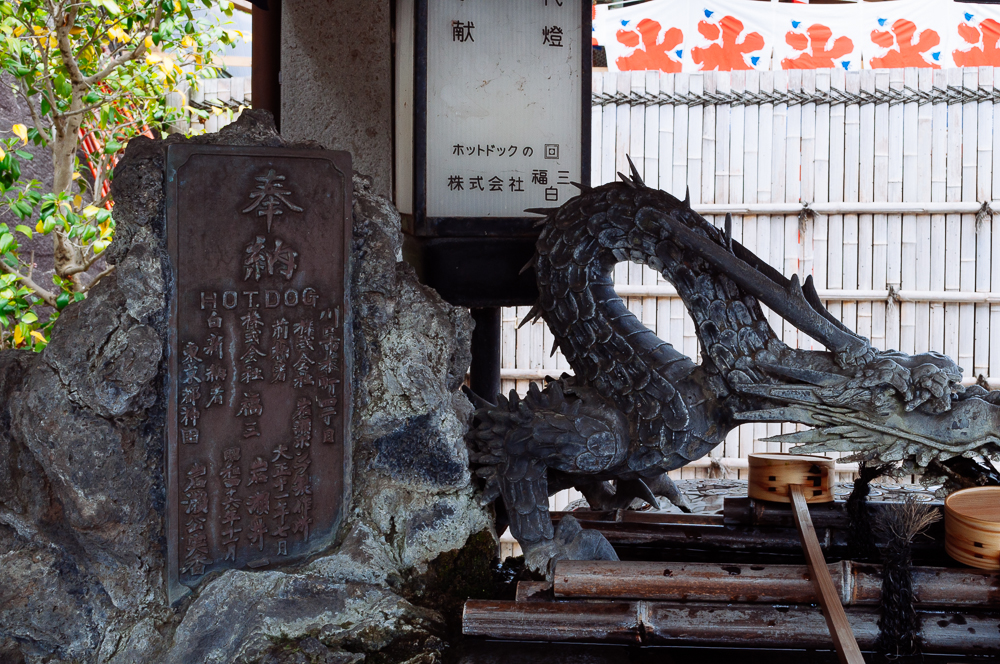

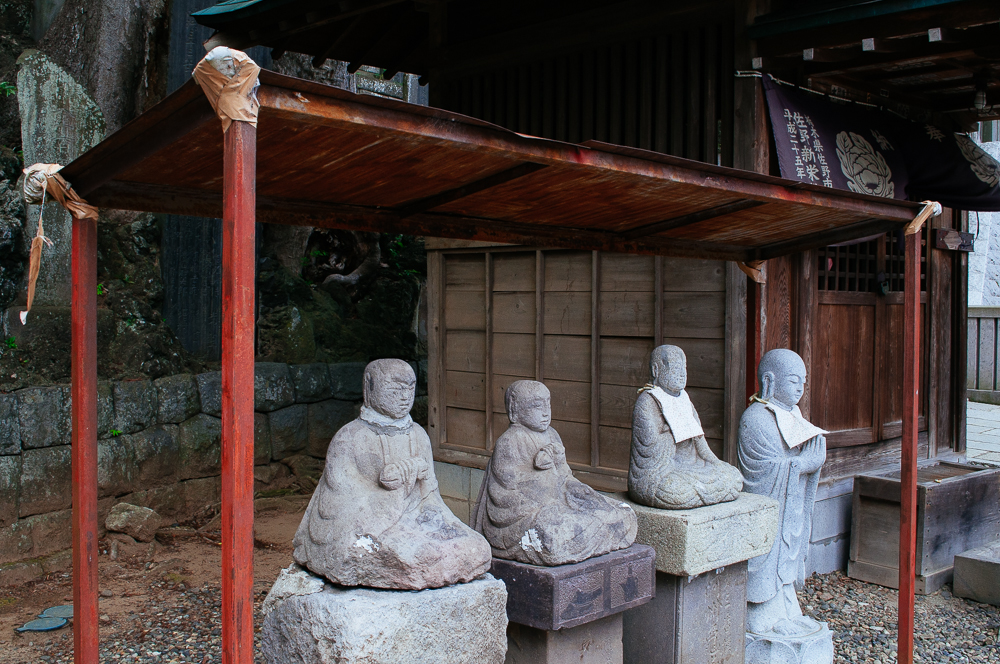

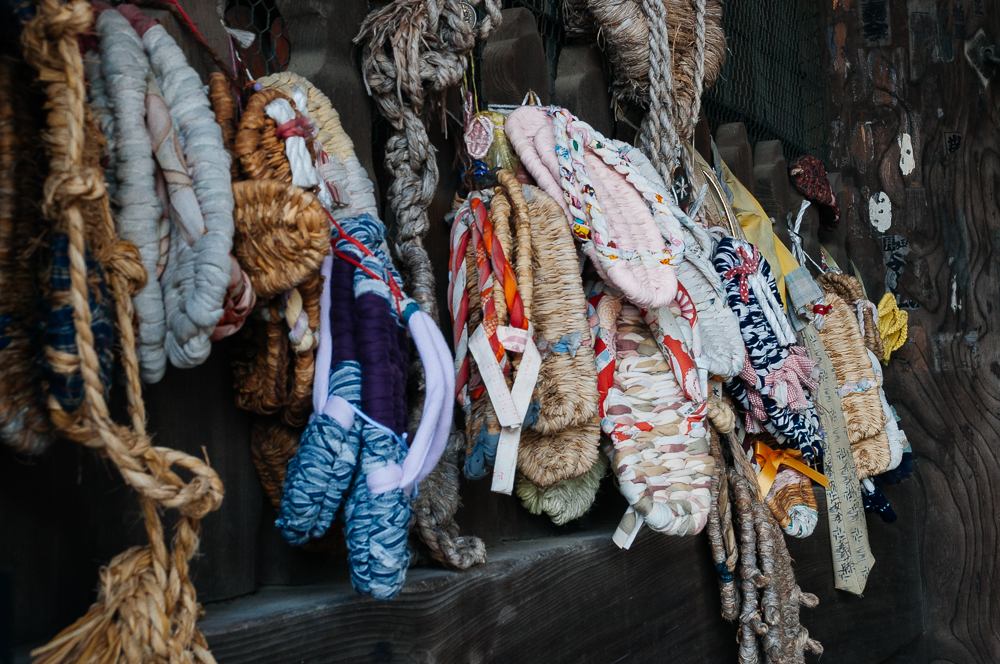


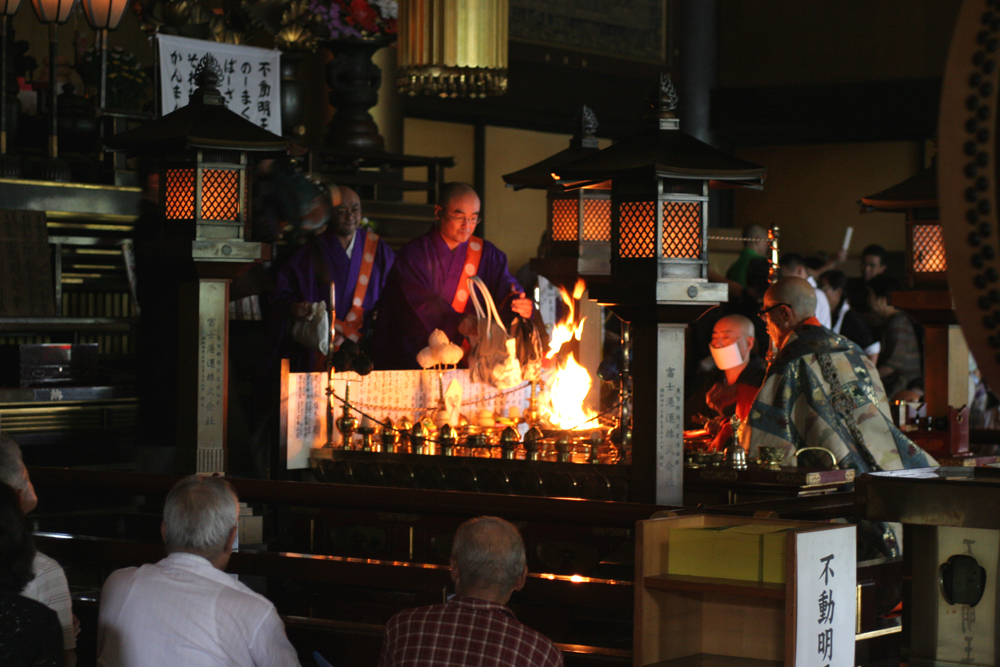
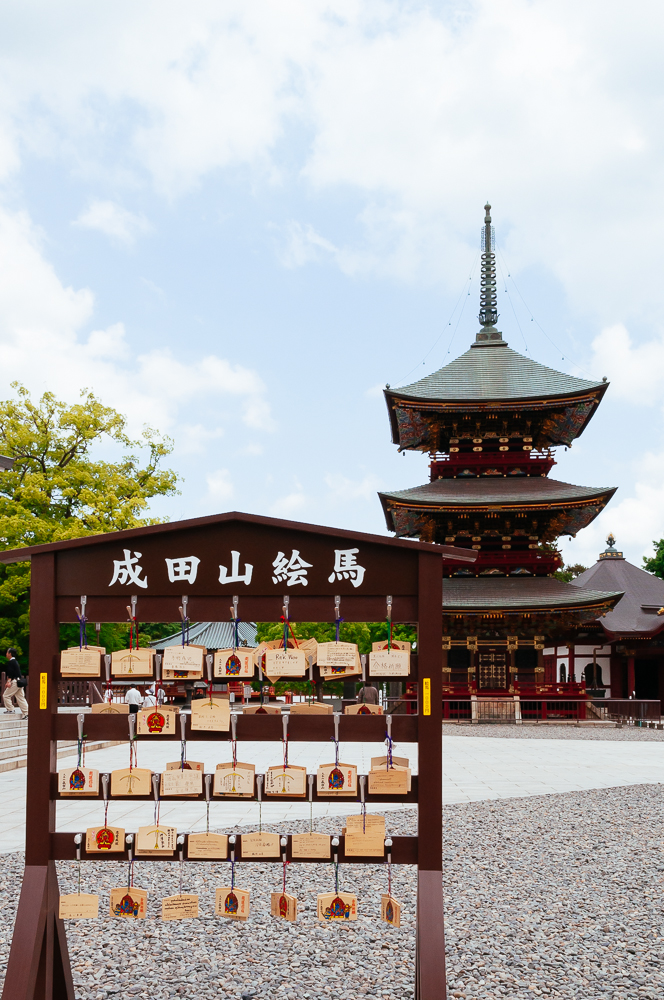
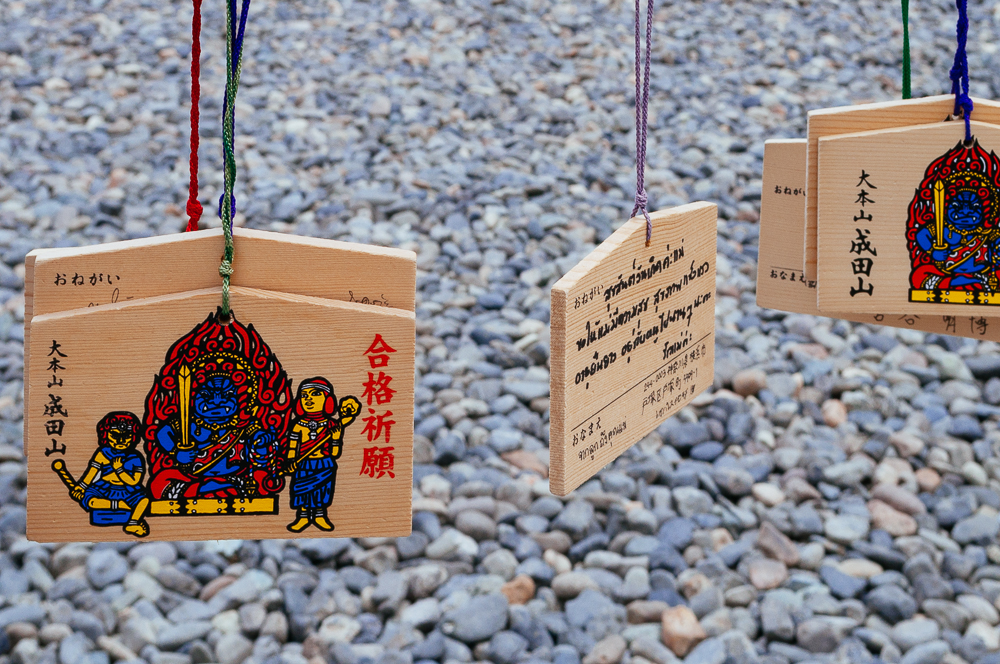
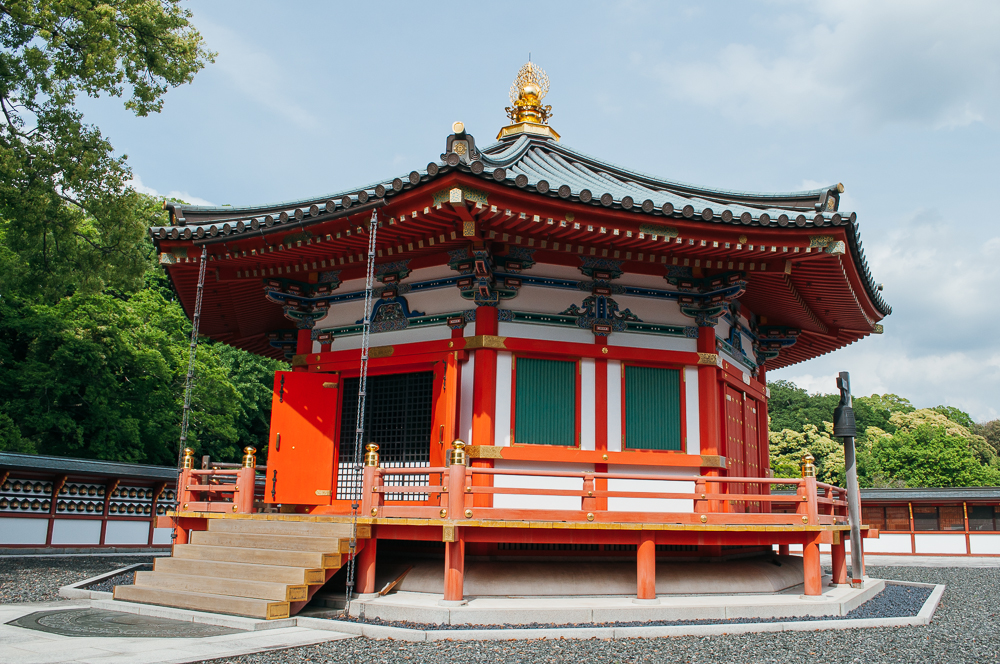

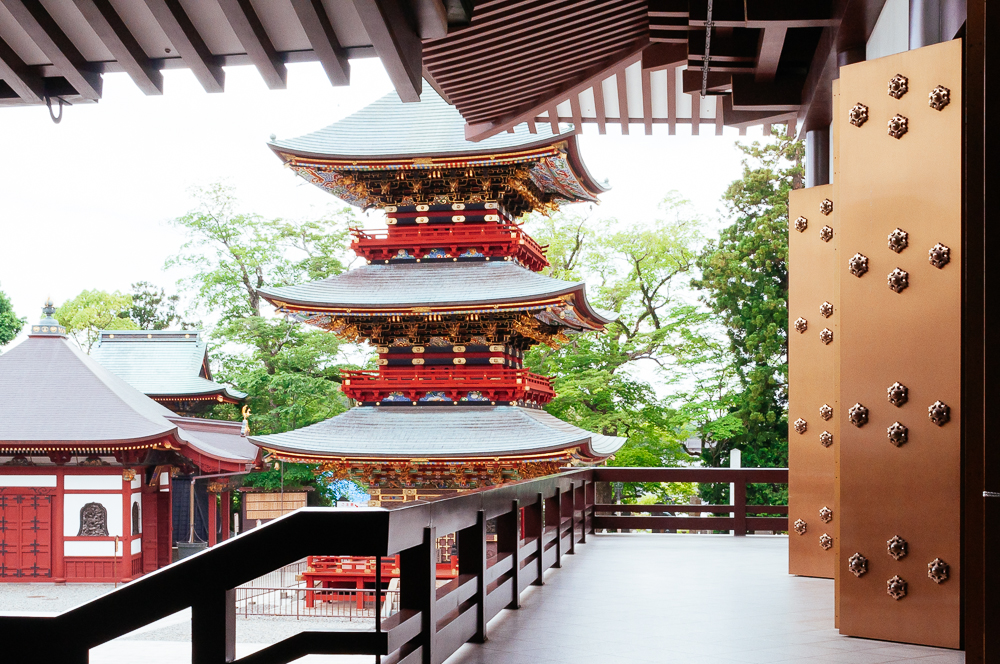
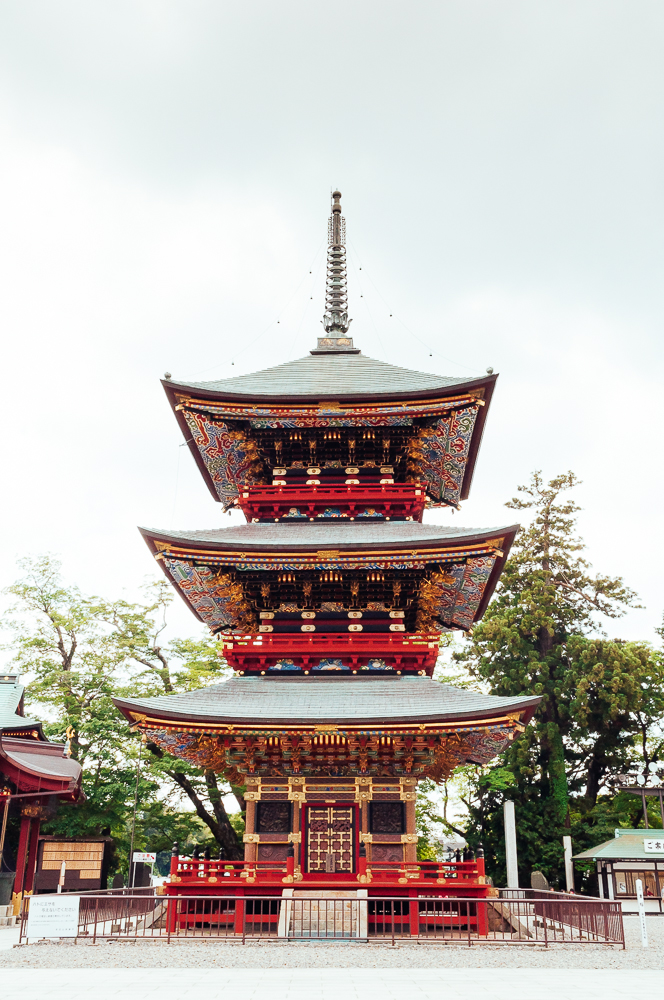

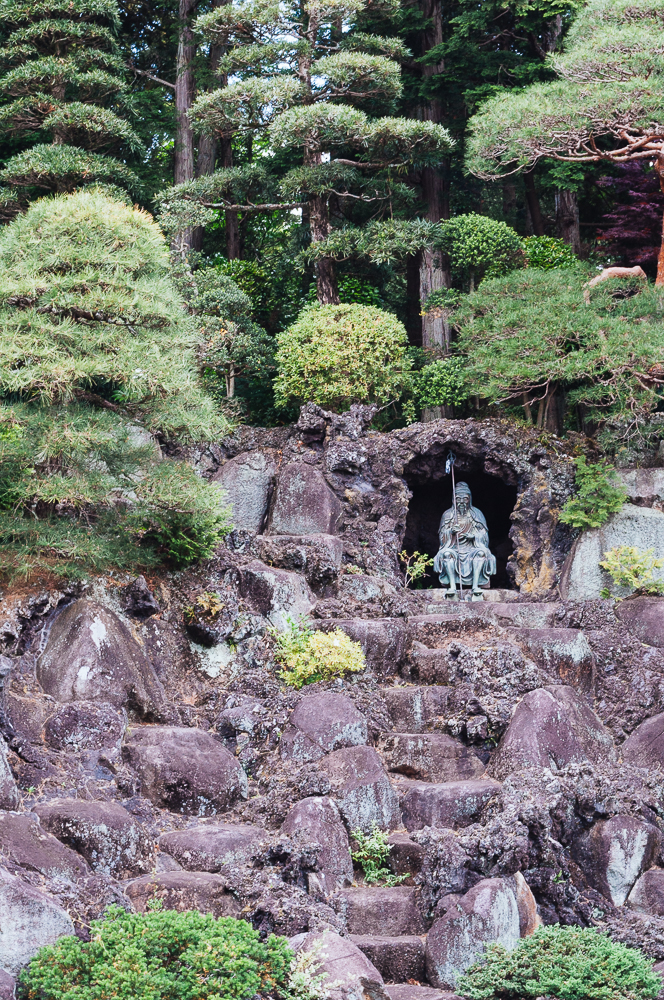
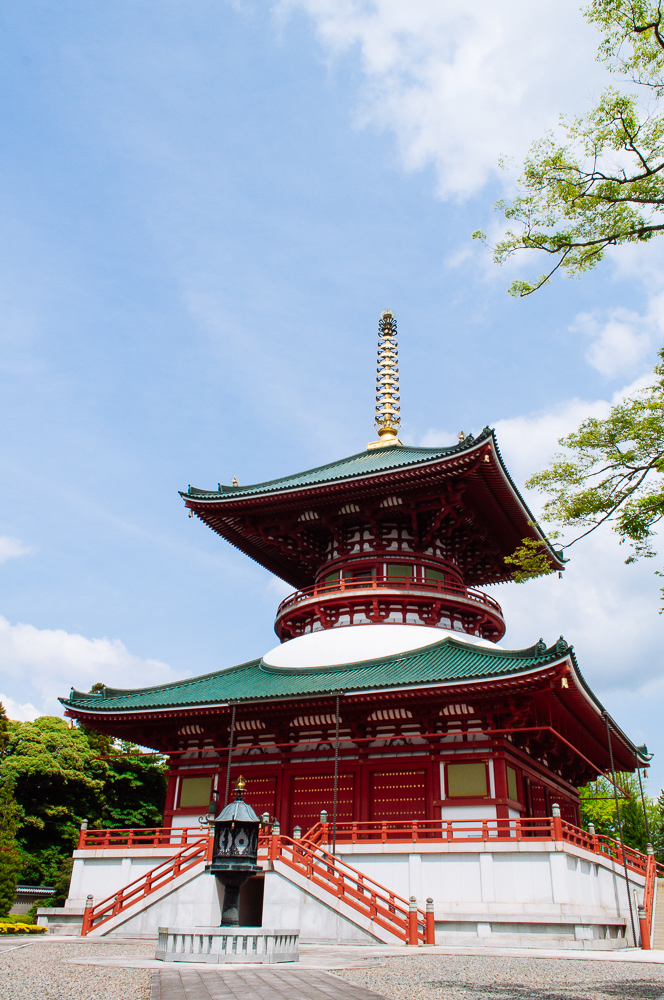
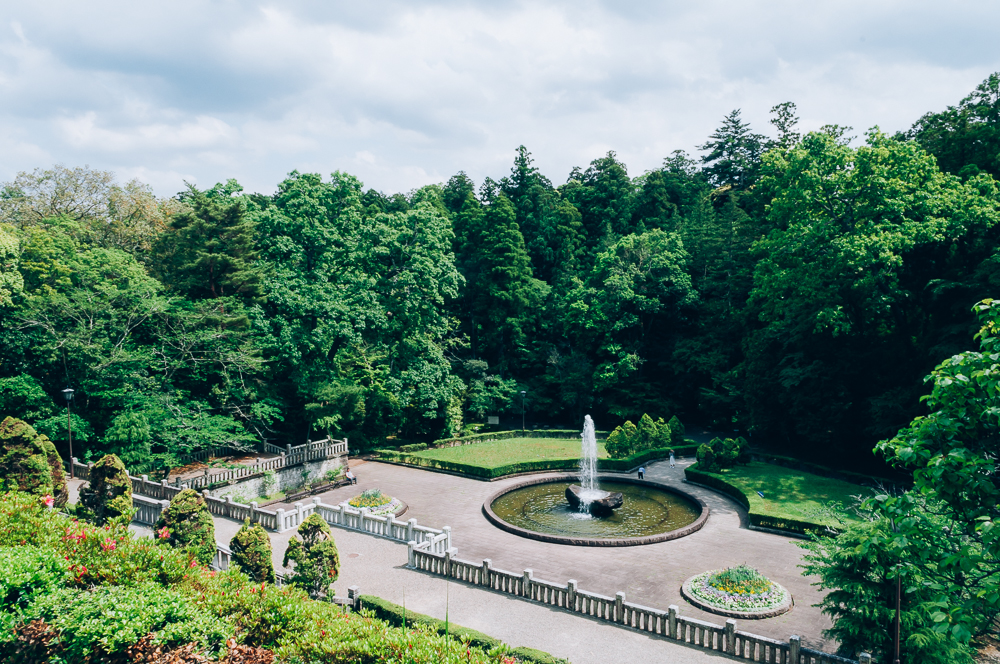
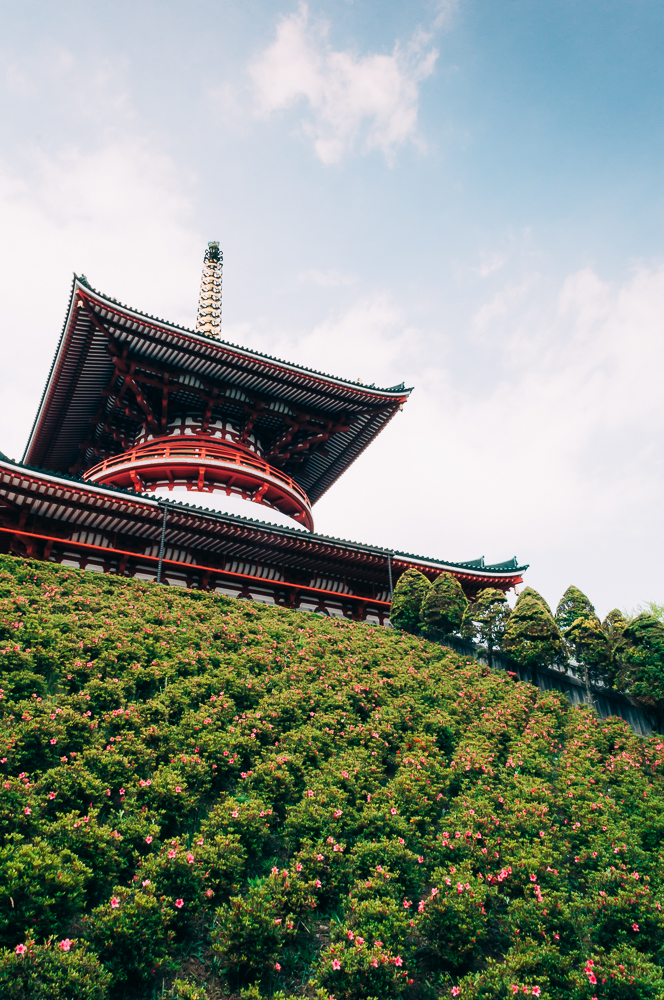
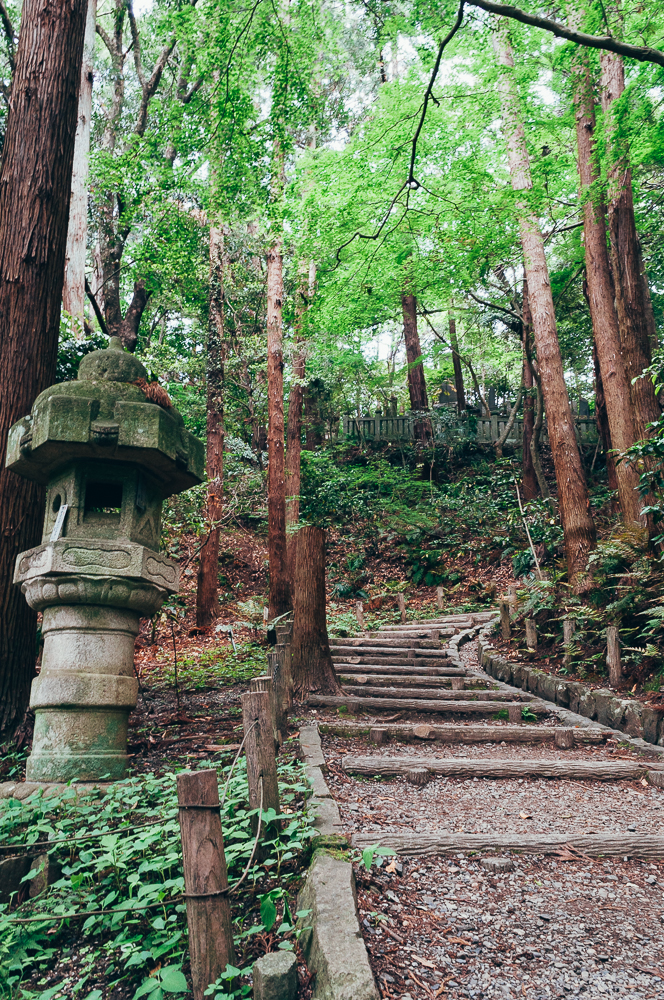
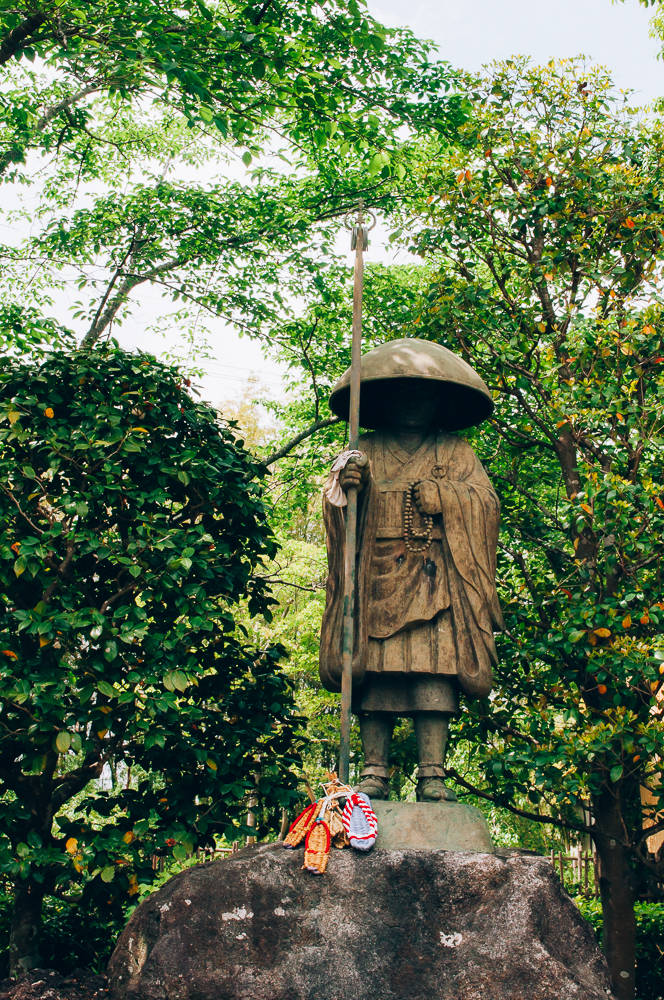
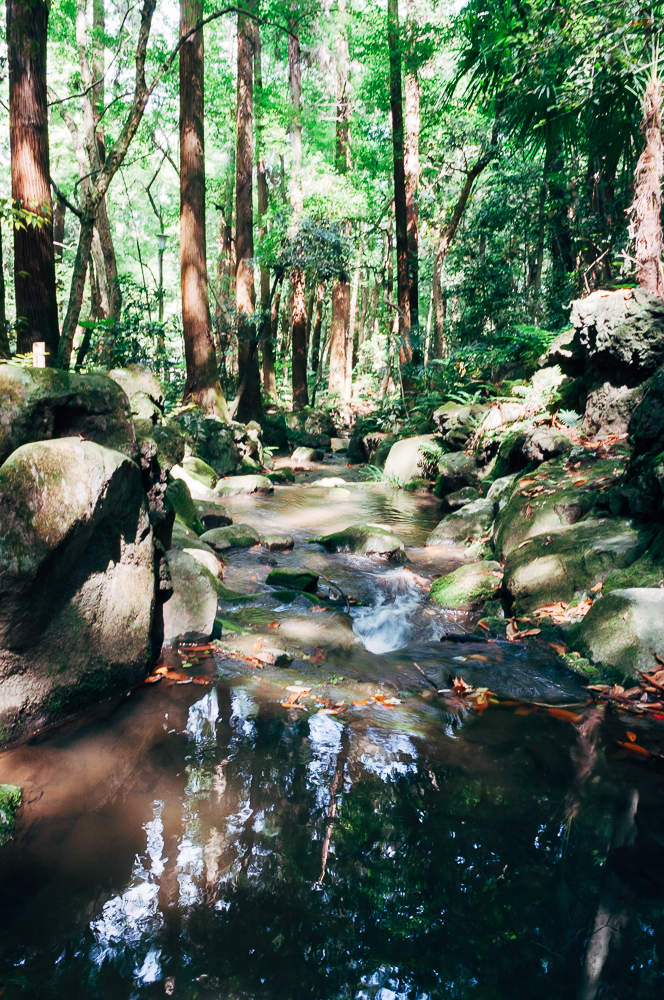
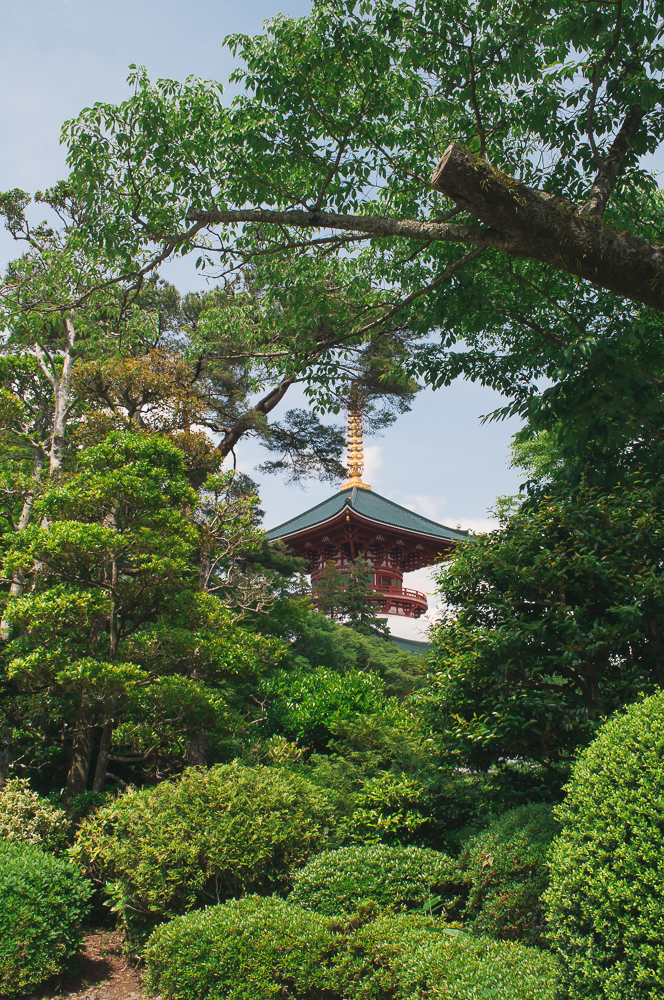
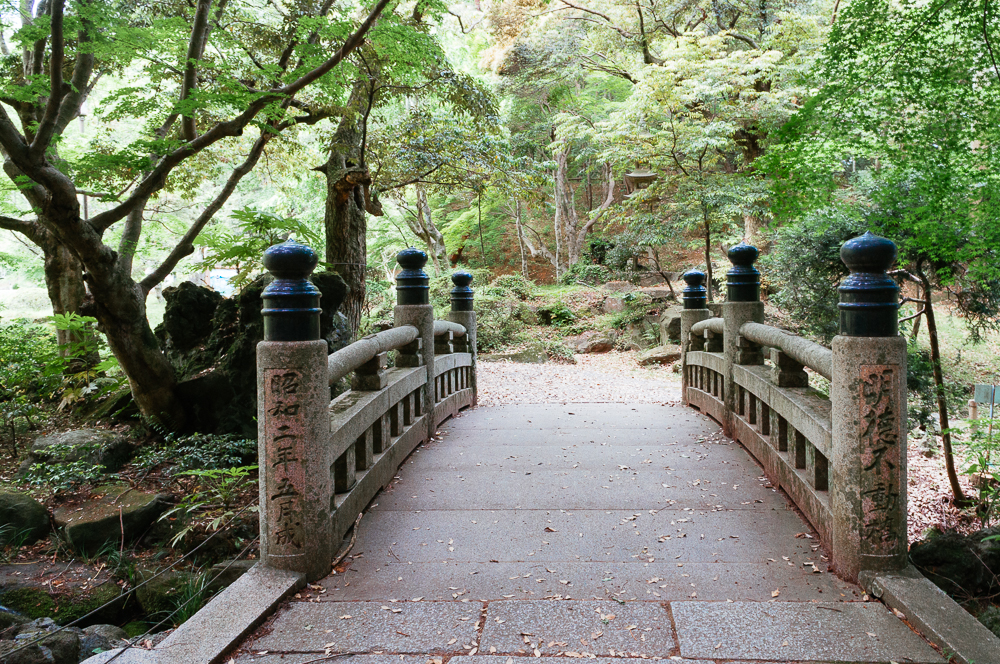

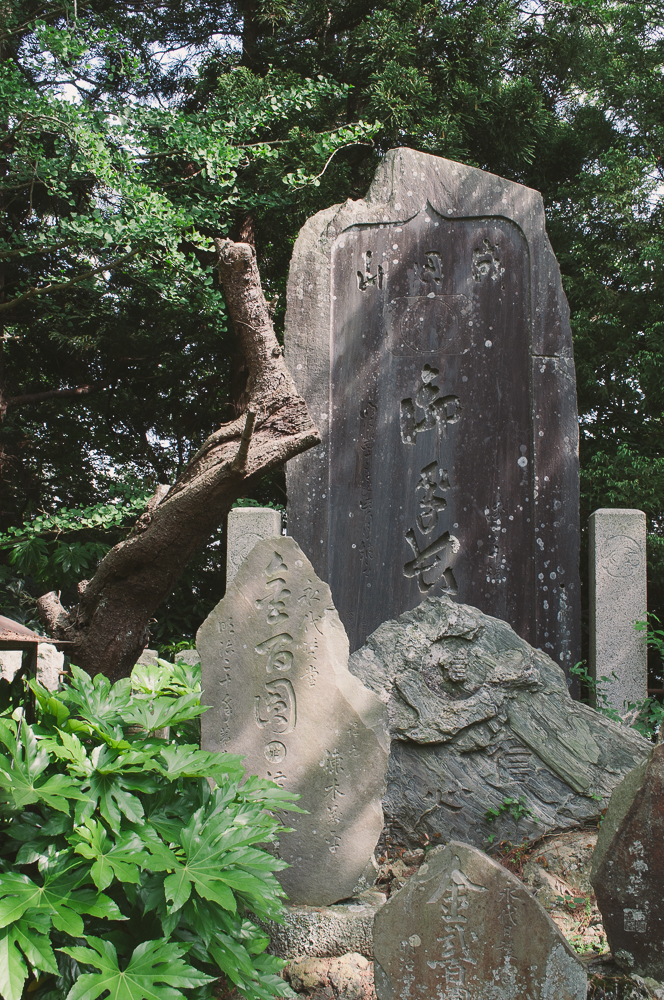
Great post and beautiful pictures. I live in Hong Kong so I understand that quiet spaces can be a relief. I have never been to Japan but it is on my list for this year so I am always happy to find some travel inspiration.
Kati from black.white.vivid.